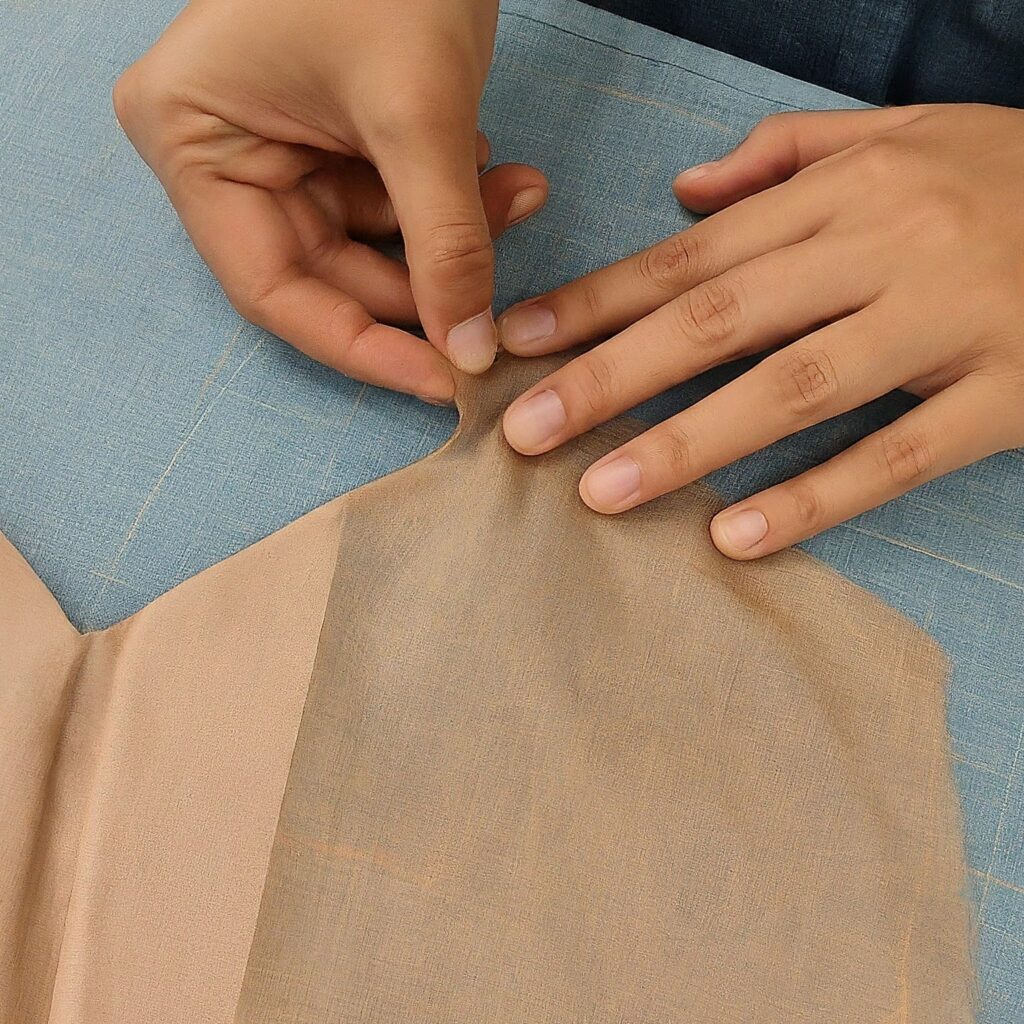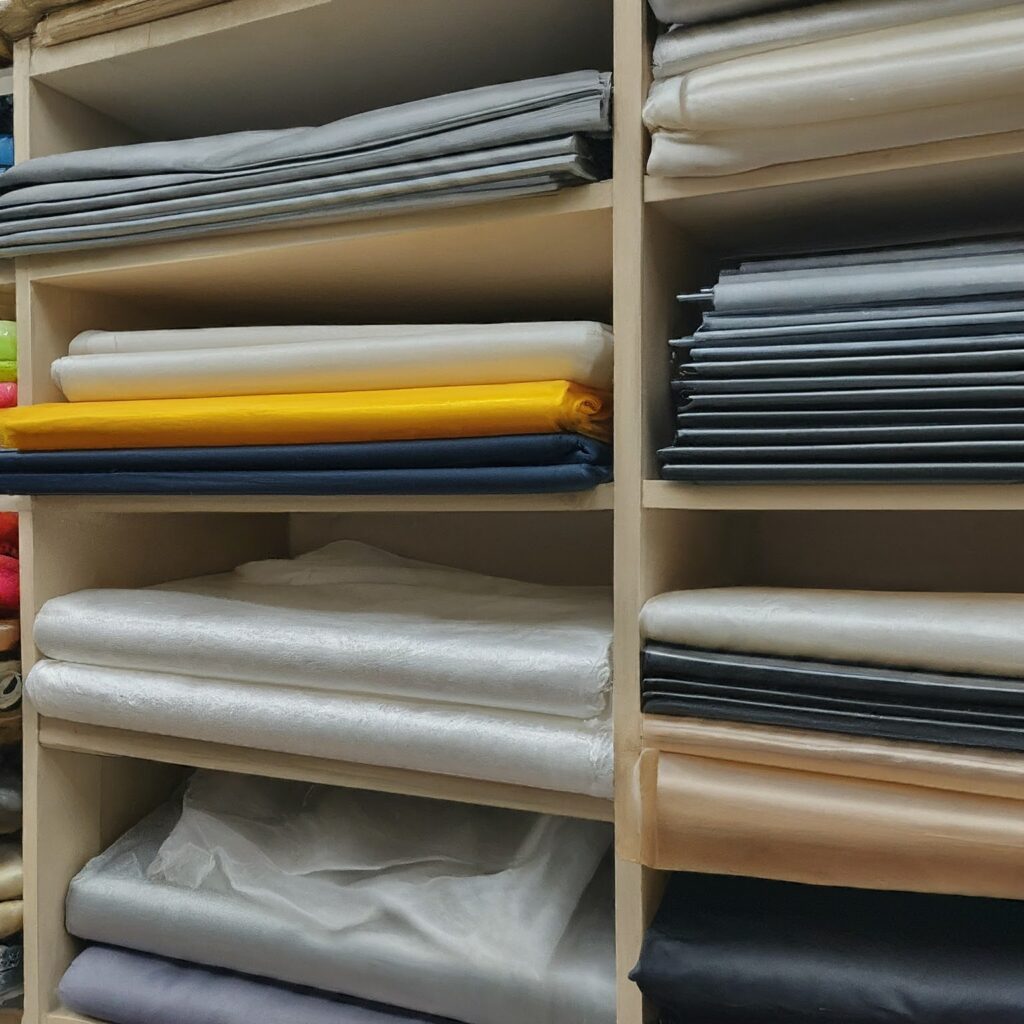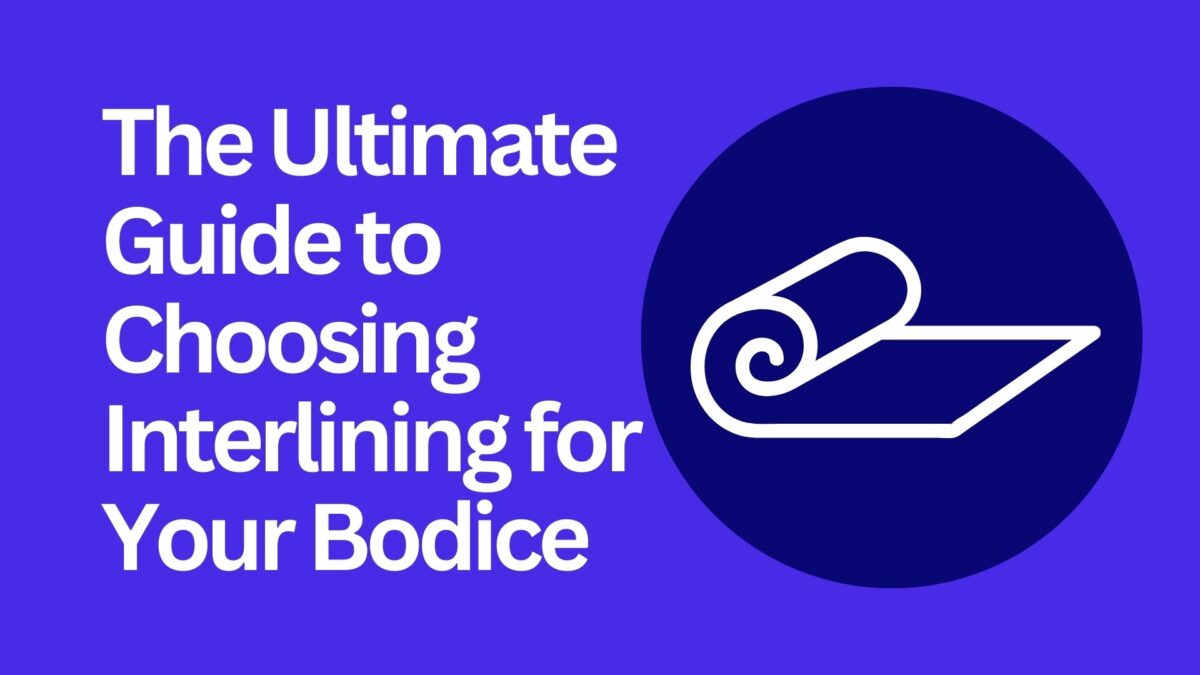The Ultimate Guide to Choosing Interlining for Your Bodice
Ever dreamt of crafting a garment with a bodice that boasts sharp lines, defined curves, and a touch of supportive magic? The secret weapon in your arsenal is interlining fabric.
But with so many interlining options available, choosing the right one for your structured bodice project can feel overwhelming. Don’t worry, I’m here to guide you through the selection process! In this article, we’ll explore the interlining fabrics, and their properties, and help you pick the perfect match for your dream bodice.
Table of Content
- What is Interlining Fabric and Why Use it for Bodices?
- Types of Interlining Fabric for Structured Bodices
- Choosing the Right Interlining Fabric for Your Bodice Project:
- Tips for Using Interlining Fabric in Your Bodice Project
- Conclusion
What is Interlining Fabric and Why Use it for Bodices?
Interlining is a sheet-like material that comes in various weights and types, designed to enhance the shape and stability of your garments, specifically for interlining in garments like bodices.
So, why is interlining so important for structured bodices? Here are some reasons:
- Structured Silhouette: Interlining provides the backbone for maintaining a defined shape in your bodice. It prevents unwanted sagging or drooping, especially in areas like sweetheart necklines, fitted waistlines, and structured seams.
- Crisp Lines and Edges: Adding interlining creates crisp and polished edges, giving your bodice that professional, tailored look.
- Improved Drape: The right interlining can actually enhance the drape of your bodice fabric by adding a touch of weight and fullness. This can create a flattering silhouette and smooth out any unwanted wrinkles.
- Enhanced Durability: Interlining reinforces your fabric, making your bodice more resistant to wear and tear. This is particularly important for garments you plan to wear often.

Types of Interlining Fabric for Structured Bodices
Now that you know the benefits, let’s explore the different types of interlining fabrics available:
Woven Interlining Fabrics:
- Made from natural fibers like cotton or synthetic fibers like polyester.
- Offer a range of weights from lightweight to heavyweight.
- Provides excellent structure and stability, perfect for creating tailored looks.
- Can be more challenging to work with for beginners due to its directional grain.
Non-Woven Interlining Fabrics:
- Made from bonded fibers, offering a sheet-like construction with no grain.
- Comes in various weights and types, with options for sew-in or fusible interlining application.
- Easier to work with for beginners due to its flexibility and lack of grain.
- Offers good to excellent structure depending on the weight and type chosen.
Fusible vs. Sew-in Interlining:
- Fusible Interlining: Has a heat-activated adhesive backing that allows you to iron it directly onto your fabric. This is a quick and easy option for beginners or projects with simple shapes.
- Sew-in Interlining: Requires stitching it to your fabric for a permanent bond. Offers more flexibility for intricate shapes and allows for precise placement. This is a good choice for experienced sewers or projects requiring more control.

Choosing the Right Interlining Fabric for Your Bodice Project
Selecting the perfect interlining for your structured bodice project depends on several factors:
- Fabric Weight and Drape:Lightweight Fabrics (chiffon, voile): Opt for a lightweight, non-woven interlining to maintain a soft drape.
- Medium Weight Fabrics (cotton, linen): A mediumweight, woven or non-woven interlining offers good structure for tailored bodices.
- Heavyweight Fabrics (wool): Heavyweight, woven interlining provides the most support for structured bodices in heavier fabrics.
- Bodice Style and Desired Structure:
- Simple Bodice (sweetheart neckline): A lightweight to medium weight interlining can provide enough structure for crisp edges.
- Structured Bodice (bustier, corset): A heavyweight, woven interlining is ideal for achieving a defined and supportive bodice.
- Sewing Skill Level and Project Complexity:
- Beginner: Fusible interlining is a user-friendly option for simple bodices. Its ease of application makes it a great choice for those starting their interfacing journey.
- Experienced Sewer: Sew-in interlining offers more control and is suitable for complex bodice shapes with intricate details. It allows for precise placement and fine-tuning of the structure.

Tips for Using Interlining Fabric in Your Bodice Project
The perfect interlining for your structured bodice, here are some helpful tips for using it effectively:
- Pre-Wash Your Fabric : If your bodice fabric is washable and you plan to wash the finished garment, pre-wash and dry it according to the fabric care instructions. This prevents the fabric from shrinking after attaching the interlining.
- Test the Interlining on a Scrap: Before using the interlining on your main fabric, test a small piece on a scrap of your bodice fabric. This allows you to check the adhesion (for fusible interlining) and ensure the interfacing (another term for interlining) doesn’t cause any puckering or distortion.
- Mark Your Bodice Pieces: Clearly mark darts, seams, and other bodice markings on both the fabric and interlining pieces before attaching them. This ensures everything lines up perfectly.
- Attaching Interlining:
- Fusible Interlining: Follow the manufacturer’s instructions for heat setting and application pressure. Use a pressing cloth for added protection against scorching your fabric.
- Sew-in Interlining: Pin the interlining to the wrong side of your bodice fabric, ensuring it lies flat and wrinkle-free. Sew around the perimeter of the interlining within your seam allowance using a straight stitch and a thread color that blends well with both fabrics. Trim any excess interlining close to the stitching line.
- Clipping Curves: Carefully clip the curves of your interfacing piece to prevent bulk in your seams, especially around areas like darts and curved bodices. This helps the fabric drape smoothly over the structured areas.
- Finishing Touches: Once the interlining is attached, press your bodice pieces according to your fabric’s care instructions. This helps the interlining and fabric bond seamlessly.

Conclusion
By incorporating the right interlining fabric, you’ll transform your simple bodice pieces into a structured masterpiece. With its added support and defined shape, your bodice will create a stunning silhouette that complements your unique style. Remember, practice makes perfect! Start with a simpler bodice design and experiment with different interlining weights and types, whether woven or non-woven, fusible or sew-in.
I hope this comprehensive guide empowers you to choose the best interlining fabric for your next structured bodice project.
Happy sewing!
Link of related Articles
- Techniques for using woven interlining for crisp edges
- A Beginner’s Guide to Interlining
- What is Interlining Fabric Used For?

